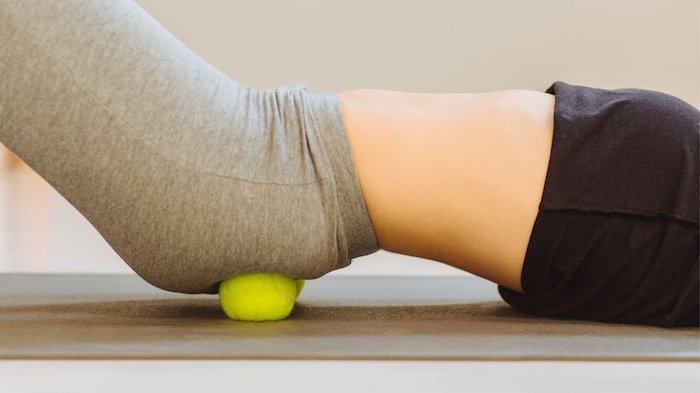
Tennis balls act like foam rollers and can be useful in relieving lower back pain. Massaging the lower back with tennis balls can help loosen soft tissues, release tension, relieve entrapped nerves, and improve flexibility.
This blog explains the healing benefits of using tennis balls for self-massage and provides 3 unique and effective ways in which you can use tennis balls to relieve lower back and/or leg pain. As an alternative, if you require more firm pressure, a lacrosse ball can be used in the same fashion.
Tennis Ball-Massages Can Foster Healing in Your Lower Back
The roller effect of tennis balls can have both, a localized and overall influence in relieving your lower back pain. When you massage your lower back with a tennis ball, it typically causes the following changes to take place in your sore tissues:
- Reduces tension in your muscles and connective tissues
- Improves the functioning of blood vessels and increases blood flow
- Promotes the flow of healing nutrients and nourishment
- Releases endorphins (your body’s natural pain-fighting hormone) to reduce the overall perception of pain
The massaging effect also reduces the hyperactivity of the nerves in your lower back, reducing the number of pain signals sent to the brain.
3 Ways to Use Tennis Balls for Lower Back and Leg Pain Relief
Relieve lower back pain at home or in the office with tennis balls by following these tips:
1. Secure Two Tennis Balls for A Supine Lower Back Massage
For this DIY massage, you will need a couple of tennis balls and some duct tape:
- Place 2 tennis balls next to each other and use as much duct tape as is necessary to secure the balls in this shape. When completed, the tennis balls and duct tape contraption will look like a peanut.
- Place the tennis balls on the ground and then lie on them in the supine position (lying down face-up), keeping the knees bent. The tennis balls should be parallel to your waist and centered just above your lower back. Each tennis ball should be situated so that it contacts the muscle tissue (erector spine muscles) on each side of your spinal column (the bony prominences that protrude out of your back, called the spinous processes, should reside between the tennis balls).
- Adjust yourself until you feel balanced and comfortable, and then raise both arms with your fingers pointed toward the ceiling. Keep your arms as straight as possible.
- Beginning with either your right or left arm, slowly lower your arm back toward your head. While keeping your arm straight, feel free to bend your neck backward when lowering your arm.
- Hold this position for a few seconds, then slowly bring it back to its original starting position.
You will feel the secured balls gently pressing and massaging your sore tissues as you move your arms back and forth. Repeat the same action with the other arm. Aim to repeat this massage 4 times for each arm.
2. Press A Tennis Ball on Your Lower Back to Relieve Back Pain
Place the ball under your back, buttock, or upper thigh while you lie on the floor and gently move around to find sore muscle groups. Once you find a tender spot, you can focus and press there, but not too hard. Be sure not to roll the ball directly over your spine. Stop right away if you feel any sharp or sudden pain.
You can also use the ball while you sit on a chair and gently press on the sore region using your body weight.
3. Roll A Tennis Ball Under Each Foot for Lower Back and Leg Pain Relief
Roll a tennis ball under your foot from the toe end to the heel. Focus more on applying pressure along the inner arch of your sole(s). Press as hard as tolerable while you roll the ball but avoid pain. Perform this massage for 2 to 4 minutes at a time.
Using tennis balls under your feet can immediately and effectively stretch your hamstring and calf muscles and improve flexibility in your lower back, relieving pain.
Massaging can help relax and heal your lower back tissues and help loosen your muscles before exercising or stretching. Keep 2 tennis balls handy and use them at your home or while at work to keep the tension off your lower back and leg muscles. Also aim to exercise or perform simple stretches to help rebuild and strengthen your muscles, preventing recurrence of pain.
Precision Pain Care and Rehabilitation has two convenient locations in Richmond Hill – Queens and New Hyde Park – Long Island. Call the Richmond Hill office at (718) 215-1888, or (516) 419-4480 for the Long Island office, to arrange an appointment with our Interventional Pain Management Specialist, Dr. Jeffrey Chacko.













